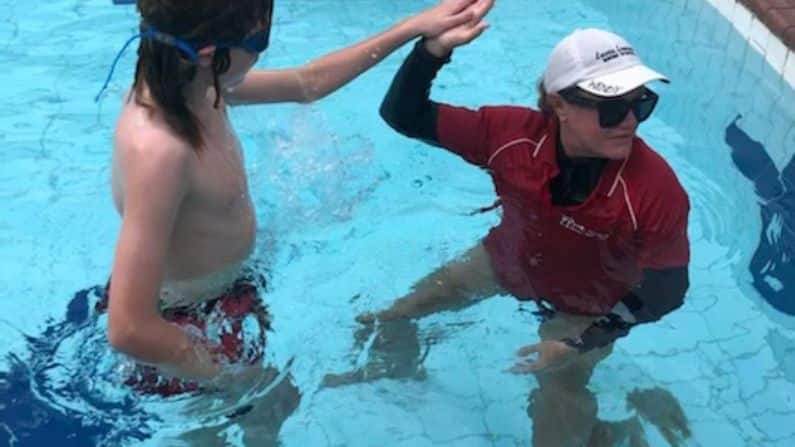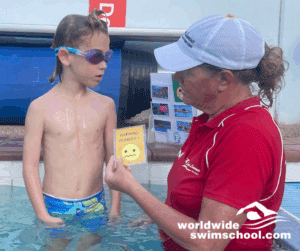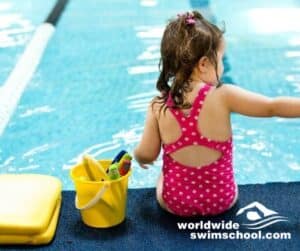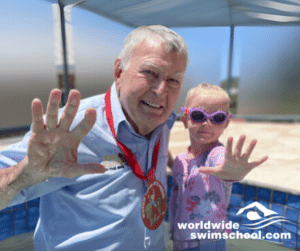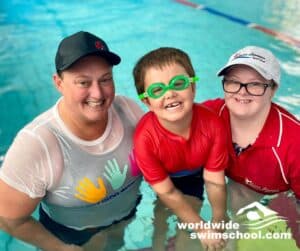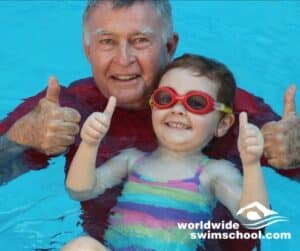Infant aquatic teachers know babies have limited cognitive, physical and social skills, and, are nonverbal but still are able to teach them breath holding and basic swimming skills. If a 4-month-old can be taught breath holding and basic swimming skills, we strongly believe anyone can learn the foundations of swimming. They may not look like Kyle Chalmers, Keiran Perkins, Cate Campbell, or Emma McKeon in the water, but, they will be able to get from point A to point B. Here, we discuss how Adapted Aquatics Teachers teach extra support care children.
Differences in Being an Adapted Aquatics Teacher
There are some significant differences between being a mainstream teacher learn to swim teacher and being an Adapted Aquatics teacher for extra support care children, such as:
- Adapted aquatics students present with a range of physical, cognitive, and social obstacles that differ significantly from students in a mainstream class
- You need to be highly connected to, and, understand the needs of your students as an Adapted Aquatics Teacher. By observing their body language closely, you will be able to understand and sense when a change in their disposition is coming
- Adapted Aquatic Teachers must be flexible and be prepared to change the lesson plan midstream if necessary to accommodate positive outcomes for your additional needs student. This may mean a complete revamp of your lesson plan, as you switch from one skill to another within your lesson plan.
- An most important skill for an Adapted Aquatic Teacher is the ability to treat all students equally as you analyse what skills need to be taught.
- Good Adapted Aquatic Teachers look past their student’s disability and treat them as mainstream students even though they have different swimming needs. It’s a fine line and sometimes can be challenging, but so can your mainstream students.
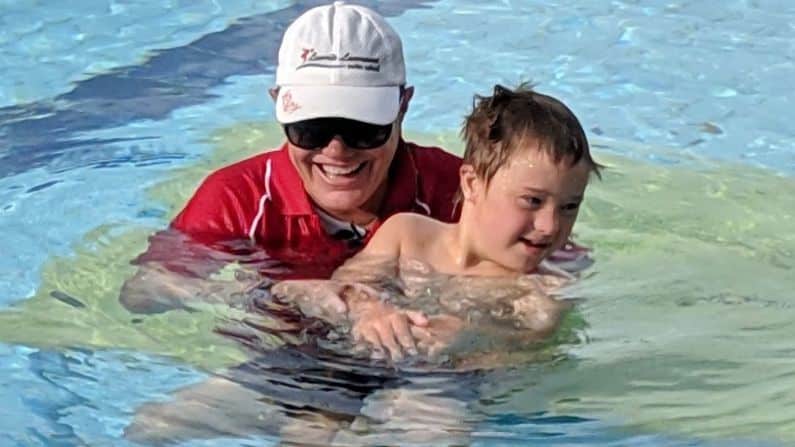
Be Aware of Inclusion in Class
The aim of the Adapted Aquatic Program is inclusion. We want the transition into our mainstream classes to be a positive experience. Therefore, the Adapted Aquatics students need to hear the same terminology, feel the same actions, and know that the skills being taught are the same as those in our mainstream program.
Learning Styles:
- Social (interpersonal): You prefer to learn in groups or with other people
- Visual (spatial): You prefer using pictures, images, and spatial understanding.
- Physical (kinaesthetic): You prefer using your body, hands, and sense of touch.
- Aural (auditory-musical): You prefer using sound and music.
- Verbal (linguistic): You prefer using words, both in speech and writing.
- Solitary (intrapersonal): You prefer to work alone and use self-study.
- Logical (mathematical): You prefer using logic, reasoning, and systems.
It is imperative that you have knowledge of the conditions of your students. Knowledge comes with levels when working with people that present with addition needs.
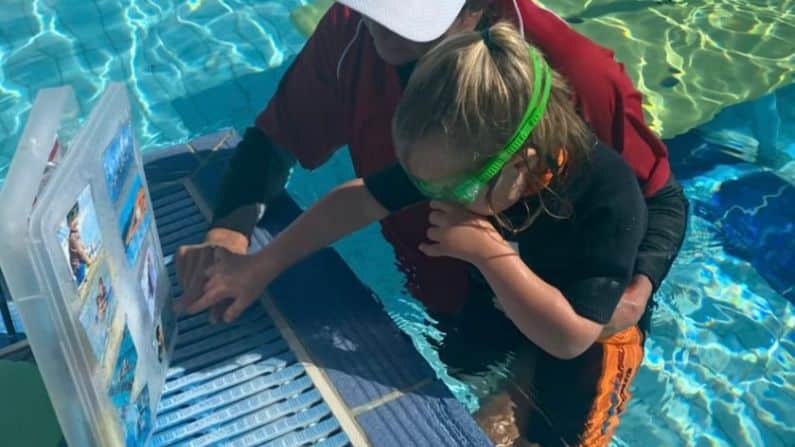
Knowledge of the Condition
It is imperative that you have knowledge of the conditions of your students. Knowledge comes with levels when working with people that present with addition needs.
Level 1 - You need to have knowledge of the condition. How it effects the physical, cognitive, and social aspects of students.
Level 2 - You need to have knowledge of behavioural and triggers of your students. How they respond to situations and challenges.
Level 3 - Knowledge of the student’s communication style. Tone, volume, and key words can make all the difference when working with AA students. The words ‘Fast little kicks’ can be enough for some students; however, these words may confuse others. Identifying words that connect with a student’s cognitive processes makes all the difference.
Level 4 – Knowledge of the students learning style. How your students respond, and retains information plays a significant role in positive outcomes.
Knowledge of Curriculum – Teaching the LLSS Curriculum
The Levels in Adapted Aquatics should be the same as the Levels in the mainstream classes. It’s just adapted. If you wouldn’t do it in a mainstream classes, you shouldn’t do it in an Adapted Aquatics class. Same equipment, toys, and objectives. Just adapted.
- Example 1: Level 2 Mainstream Class Lesson Plan
Warm up kicking - Kickboard - Streamline - Freestyle drill (6 kicks change or skins) - Back floating drill (Board no kicking, or kicking)
- Example 2: Level 2 Adaptive Aquatics Class Lesson Plan
Warm up kicking - ADAPTED Kickboard - ADAPTED Streamline – ADPATED Freestyle drill –ADAPTED Back floating drill.
Exactly the same, just adapted.
Join our community and keep up to date with new articles, special offers - it is free to join!
Looking for more information on learning how to swim - don't go past the Swim Library.
